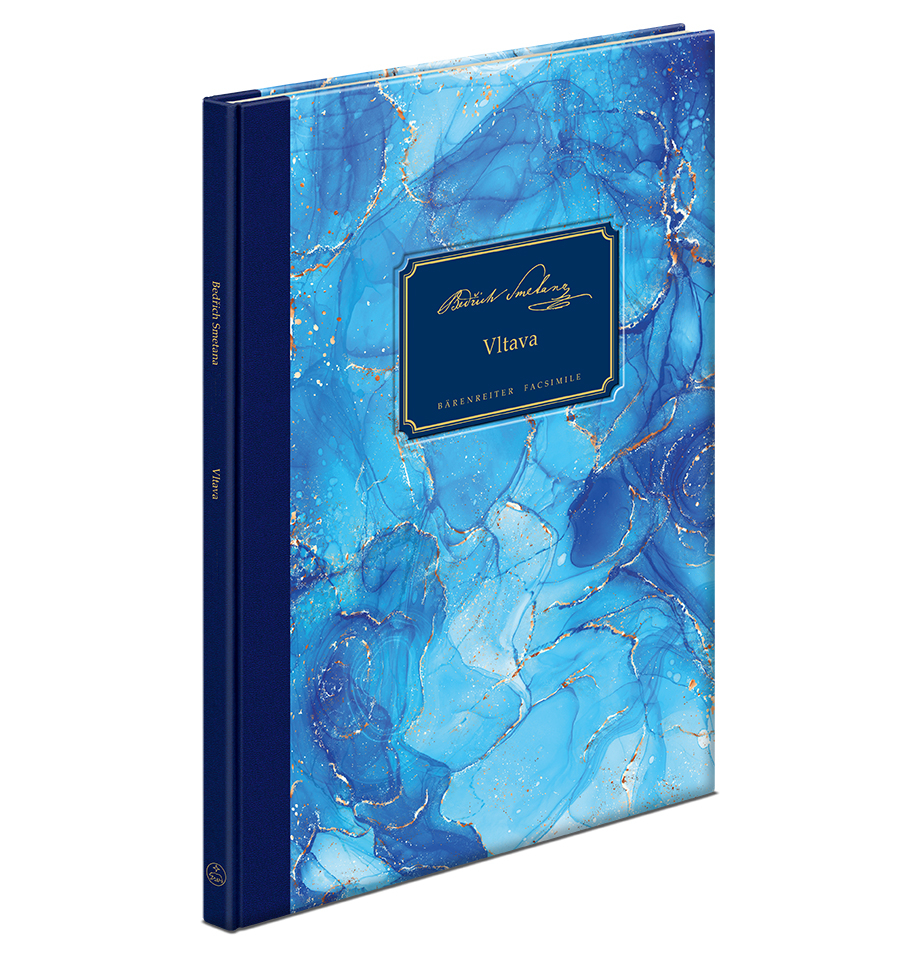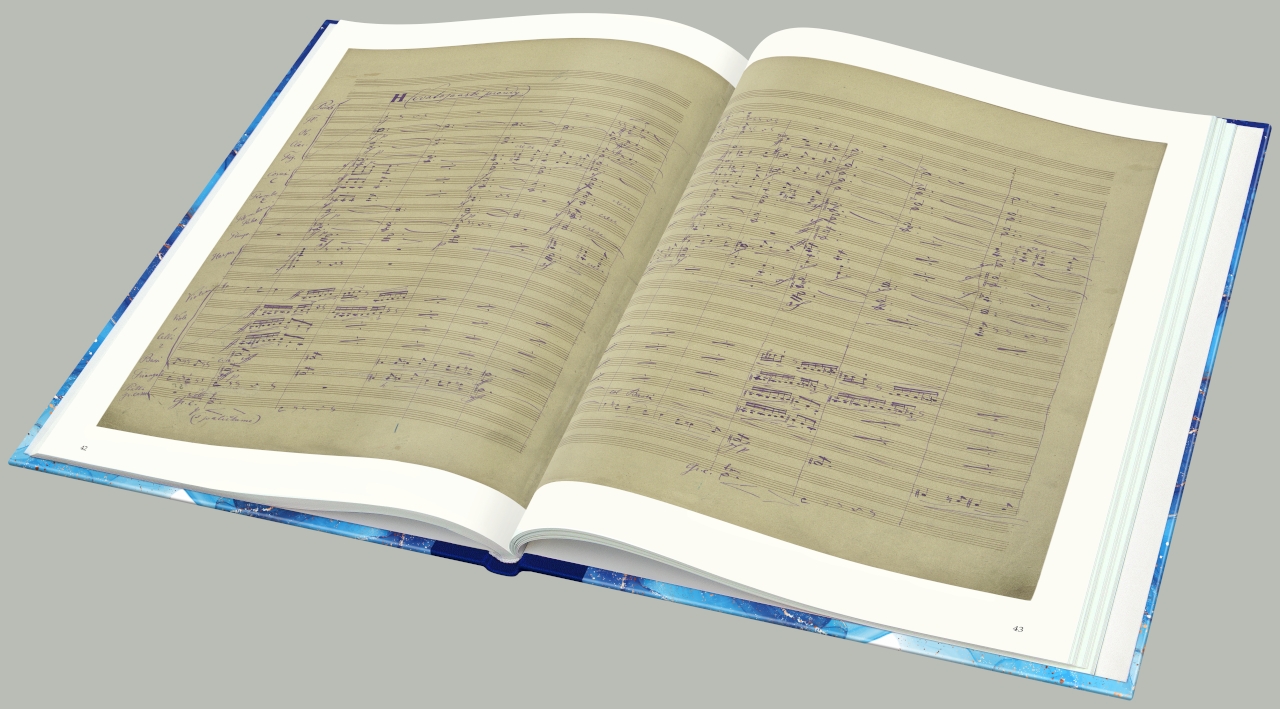
Bedřich Smetana
Vltava
Orchestral score – facsimile of the autograph
BVK 4013
Limited edition to commemorate the 200th anniversary of the composer’s birth
- First-ever publication of the complete autograph score of Vltava
- Facsimile of the manuscript in original dimensions (25 x 33 cm) and an exclusively produced book format (hand-bound in gold-blocked leather)
- 64-page facsimile supplemented with 24 pages of insightful commentary (Cz/En/Ger) by Smetana experts Hugh Macdonald and Olga Mojžíšová
- An invaluable source for researchers and conductors
- A collector’s item for connoisseurs of historical manuscripts and beautiful books
From Bedřich Smetana’s diary, 14 August 1870 (trip to the St John’s Rapids):
Trip to Štěchovice and the St John’s Rapids. Set off by steamboat from Prague at 8 a.m., in Štěchovice at 12. [...] on foot over the hills and forests to what is called St John’s Gate, and then down stream by boat. High water, the view beautiful and majestic.
Smetana’s only authentic statement on the work’s programme:
The composition depicts the course of the Vltava, beginning from both the small springs, the cold and warm Vltava, the joining of the two streamlets into one stream; then the Vltava flowing through the groves and meadows, the countryside, which happens to be awake with wedding merriment; fairies dancing in the light of the moon; proud castles, halls, and ruins stand tall on the surrounding cliffs; the Vltava tumbling down the rapids of St John; and flowing on to Prague in its broad expanse, Vyšehrad appears, and finally it fades into the distance with its majestic current joining the Elbe.
AN ICON OF CZECH MUSIC
An exclusive edition
BÄRENREITER FACSIMILE
Vltava, the second part of the six-part cycle of symphonic poems My Country by Bedřich Smetana (1824–1884), is one of the most popular works of Czech classical music around the world. Smetana composed it while completely deaf, finishing it in a mere 19 days on 8 December 1874.
From Bedřich Smetana’s letter to his friend Jan Ludevít Procházka the day after completing Vltava:
I inform you that yesterday on the 8th of Dec. I completed my second symphonic poem Vltava, which required more mechanical work from me than Vyšehrad and which is also 16 pages the longer of the two.
A perfect manuscript
Smetana’s clean and meticulous manuscript of Vltava is one of those rare artistic autographs that is every publisher and musician’s dream. Its 64 pages bear no marks of the composer’s “creative struggle” for the final version of the work. It contains no deletions or extensive visible corrections. The few passages where the composer changed his mind were scratched out and rewritten so thoroughly that there can be no doubt or question about his final intention. He scrupulously ensured that the musical text was flawless and devoid of any ambiguity.
Exceptional musical imagination
Besides five brief motivic sketches on a separate sheet of paper, no draft version of Vltava has been preserved. It is almost certain that the 50-year-old, completely deaf Smetana composed Vltava straight into the score. He had a clear idea of the composition’s intended sound, and he placed great emphasis on every detail of his notation. Like with the other parts of My Country, the autograph of Vltava is replete with dynamic and articulation markings and verbal instructions that testify to Smetana’s desire to record the work’s ideal form as accurately as possible in the score. This is another exceptional feature of the autograph of Vltava.
The autograph is housed in the National Museum – Bedřich Smetana Museum in Prague.
The autograph’s story
The premiere of Vltava was conducted directly from the autograph, as were subsequent performances until 1880, when the score and orchestral parts were published by František A. Urbánek. Smetana had concluded a contract with him the previous year and had handed over the autograph score of Vltava for publication for 40 gulden (along with the scores of the other parts of My Country under the same conditions).
The autograph scores of the whole cycle, including Vltava, remained in Urbánek’s publishing house until 1926, when the heirs of the publisher’s descendant Mojmír Urbánek and Smetana’s family resolved a legal dispute over their ownership by jointly agreeing to give all of the composer’s autographs to the National Museum in Prague for safekeeping. In 1930 the museum handed them over, as agreed, to the recently (1926) established Bedřich Smetana Museum. The autograph of Vltava has been kept in the Smetana Museum’s safe under strict environmental conditions ever since.
The autograph score of Vltava, as well as those of the other parts of My Country, also served as the main source for our latest Urtext edition prepared by Hugh Macdonald.





